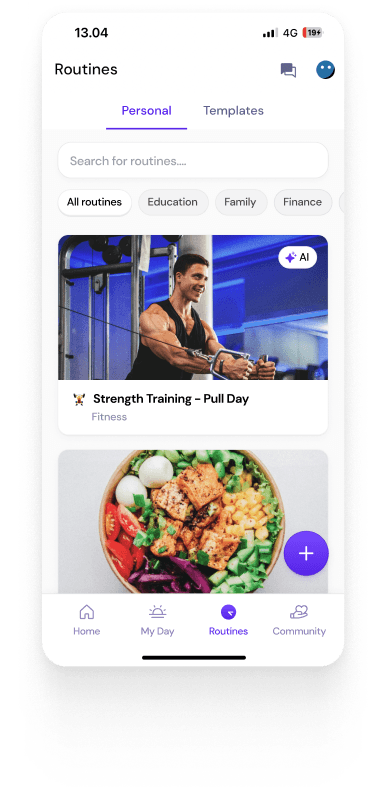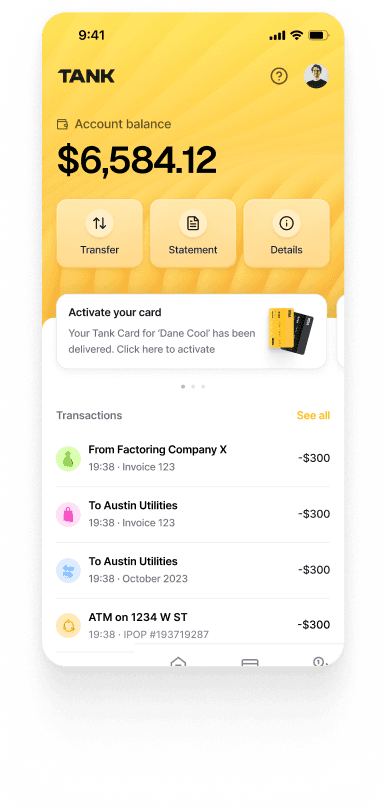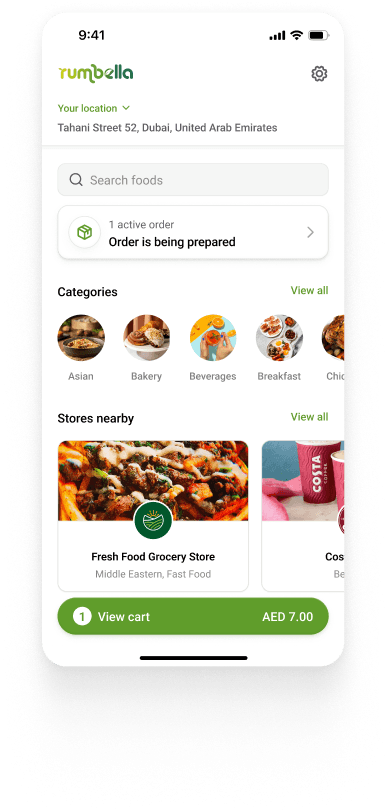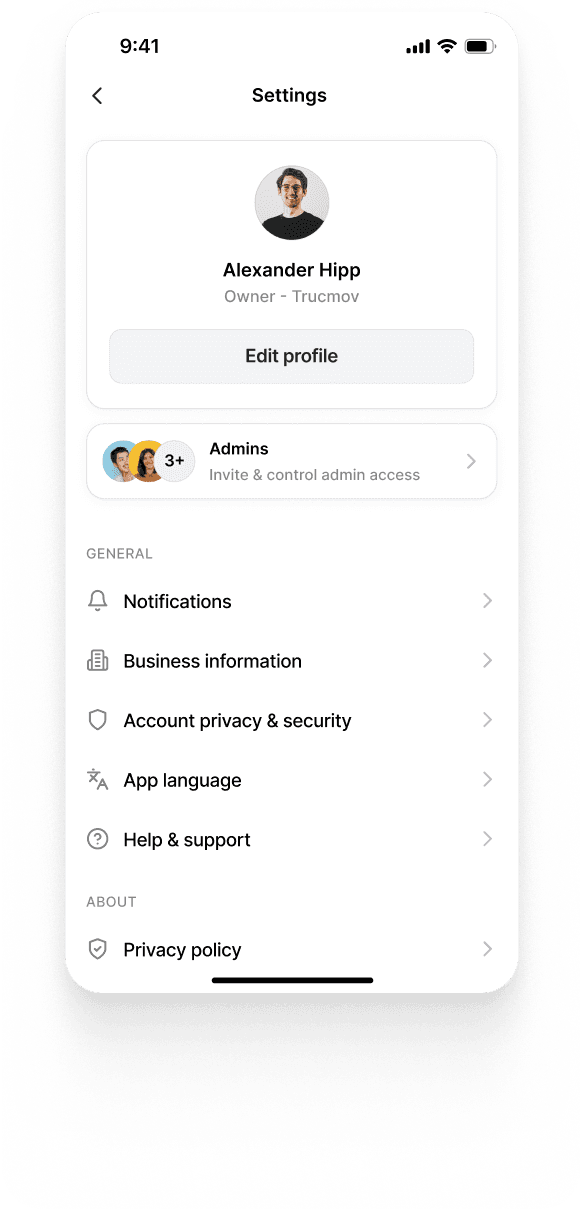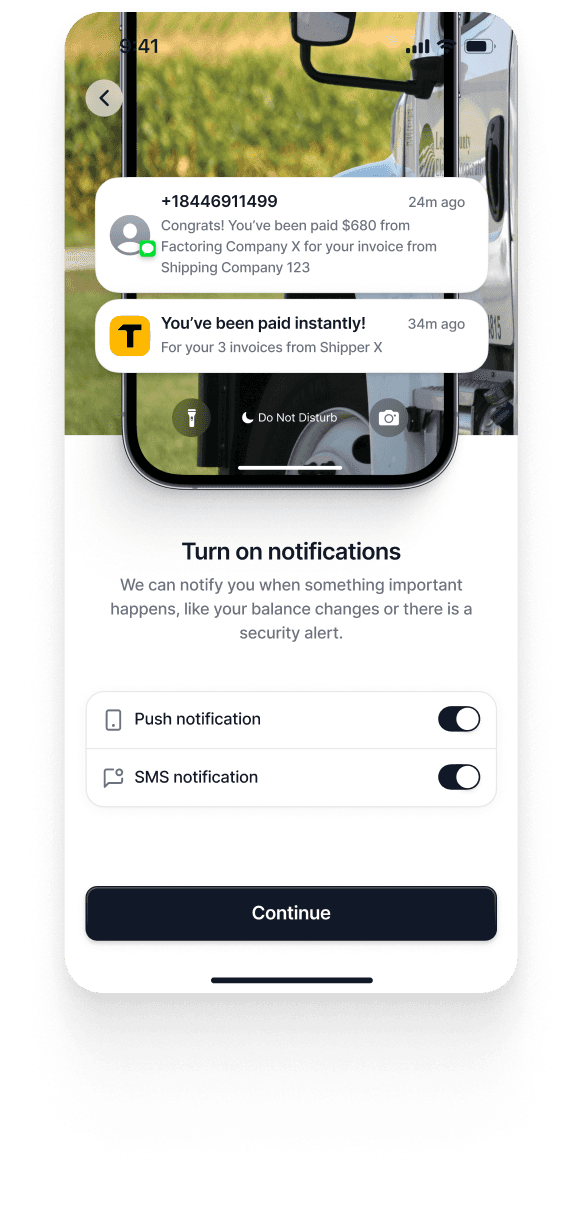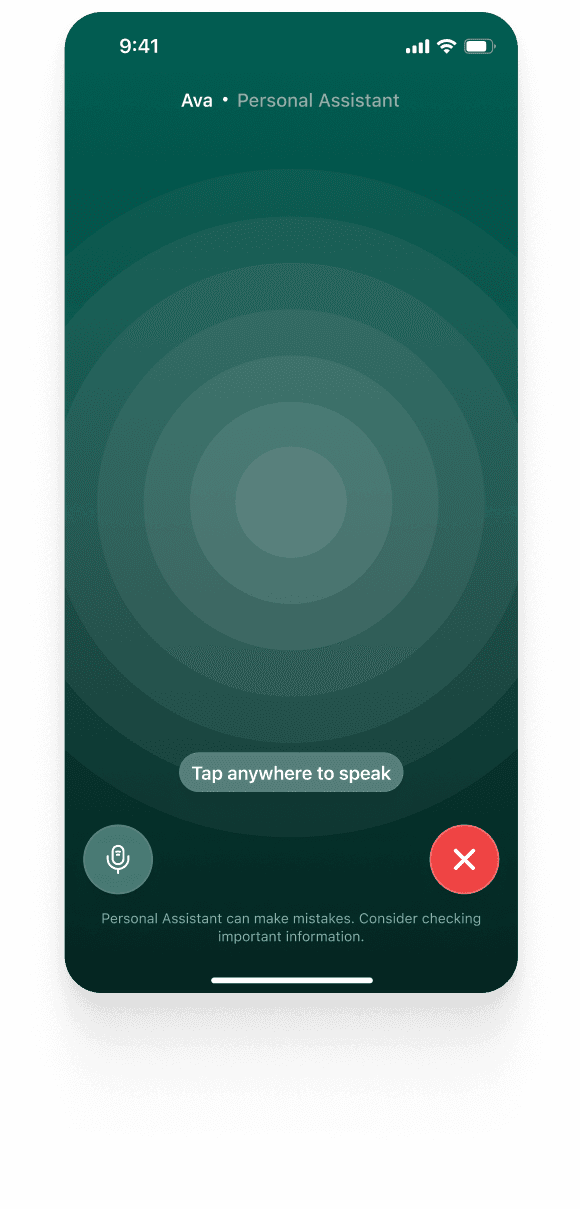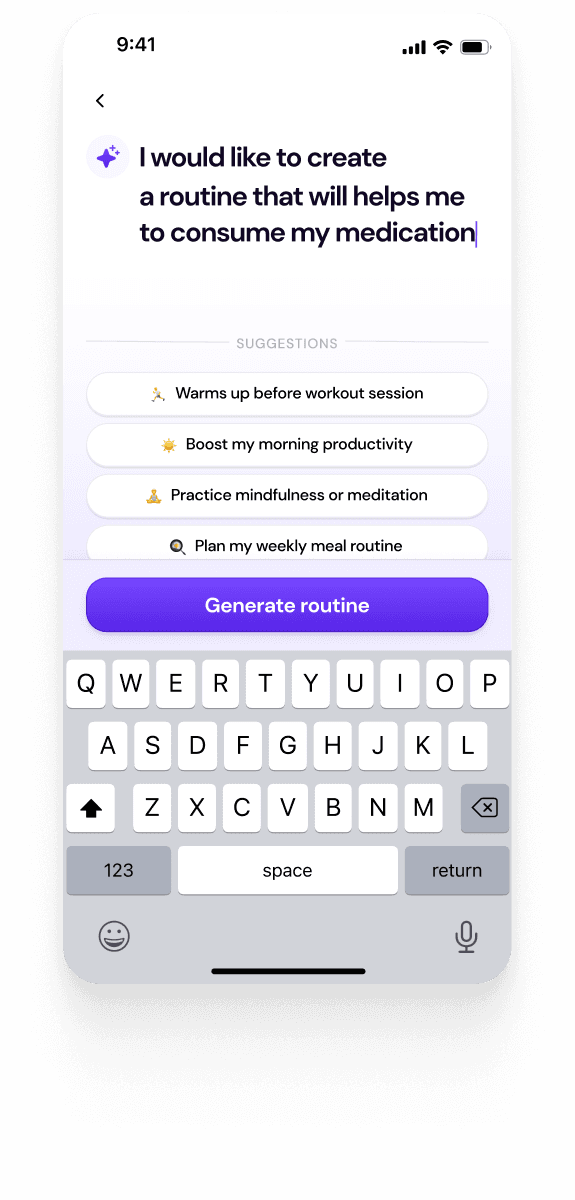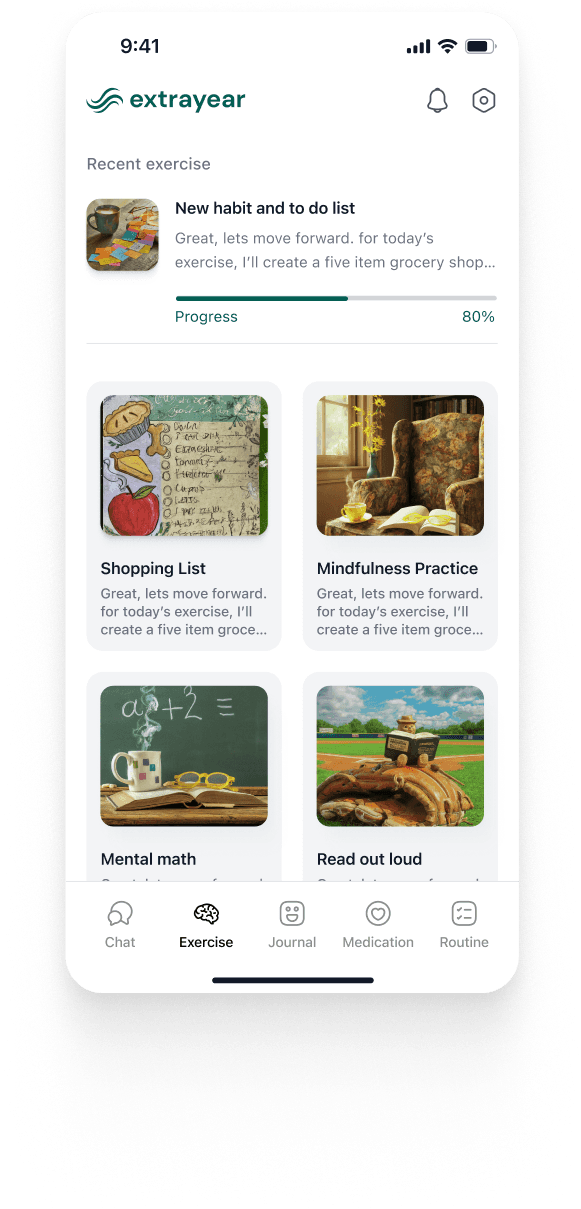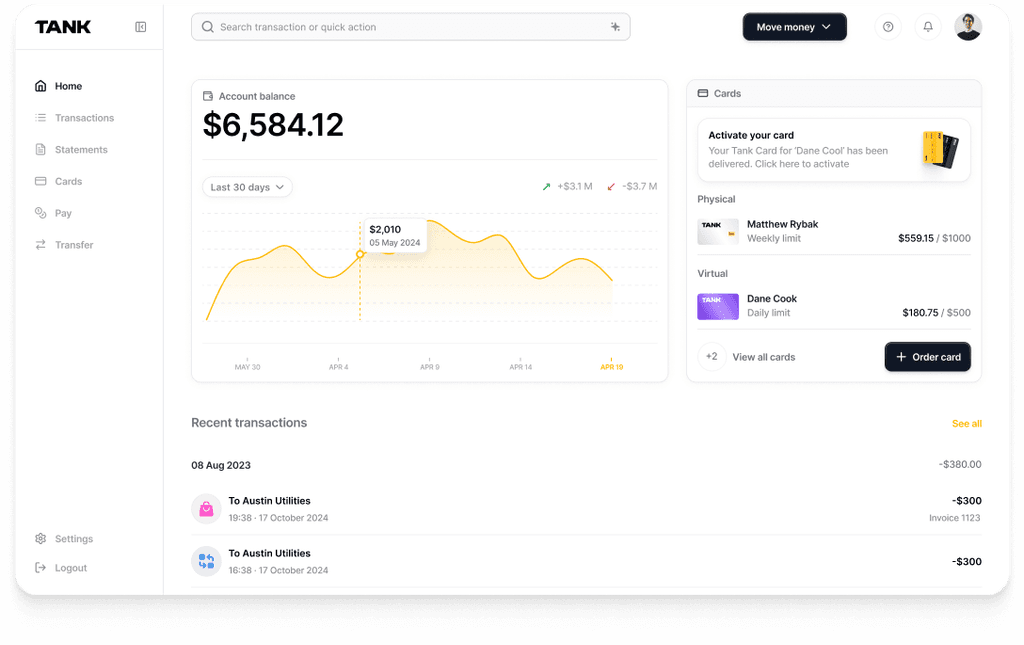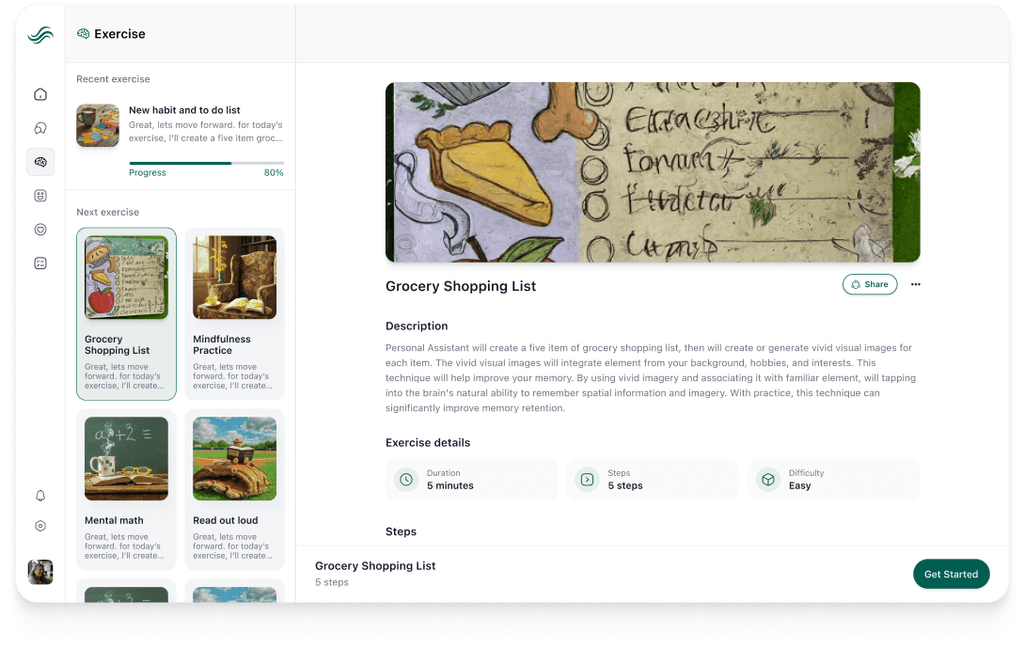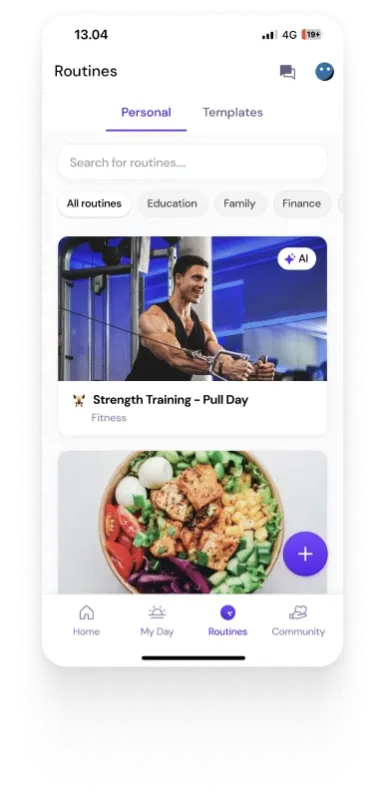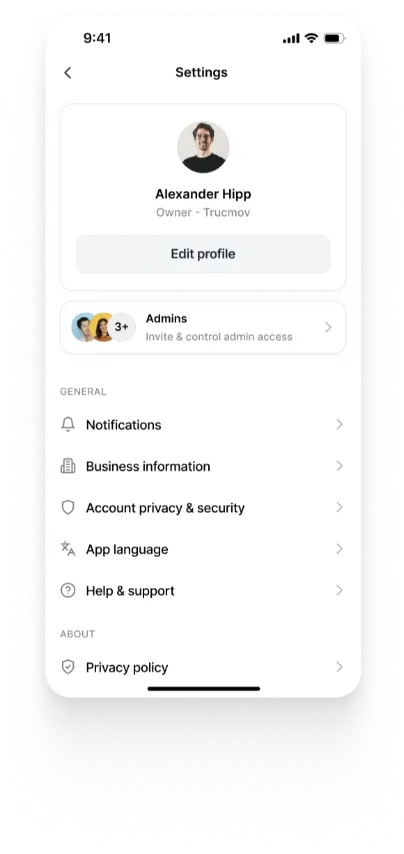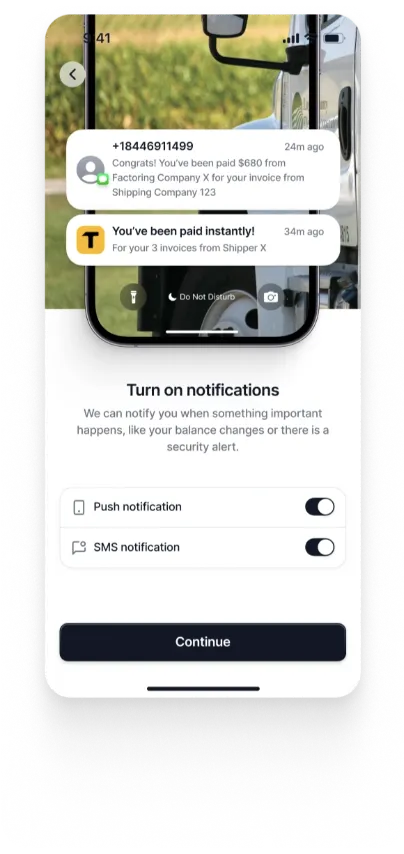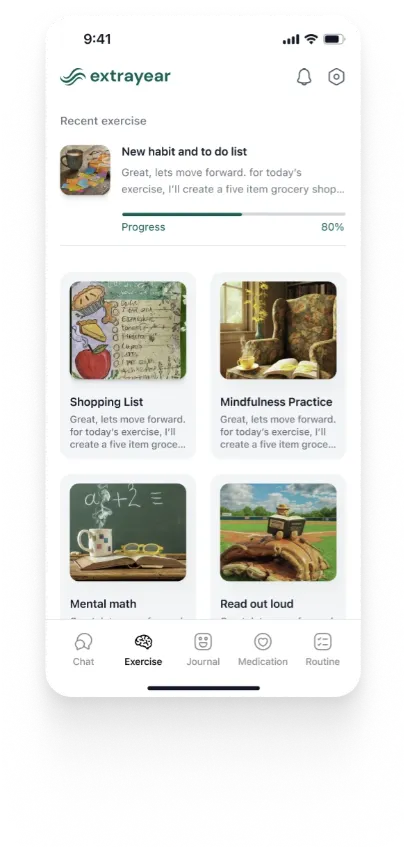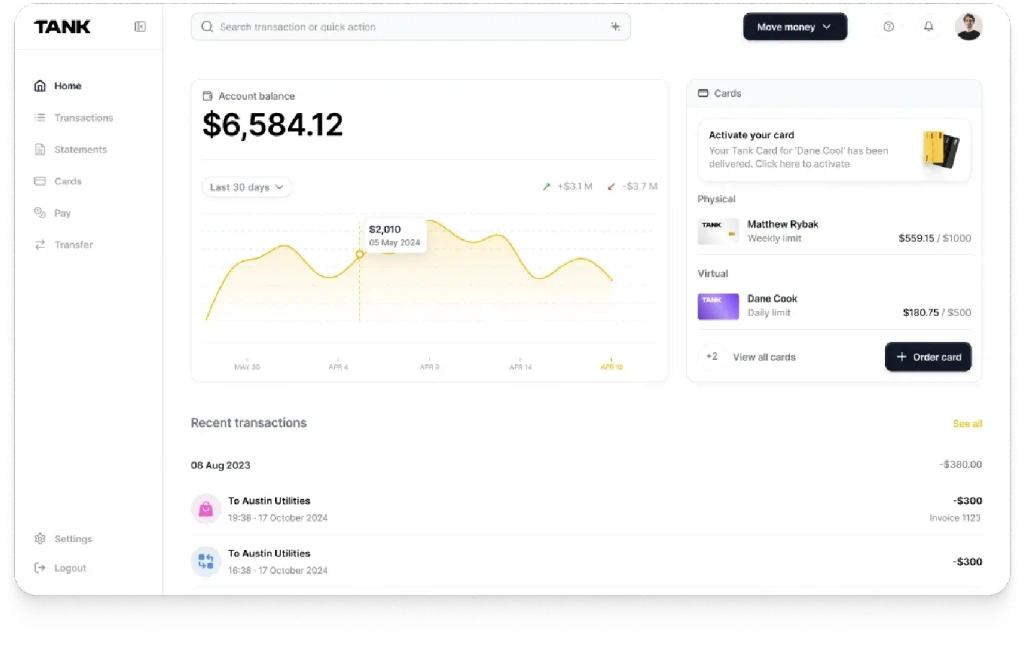Retrieval-Augmented Generation (RAG): Bridging LLMs with External Knowledge
Summary
Retrieval-Augmented Generation (RAG) enhances LLMs by integrating real-time, external data to boost factual accuracy, relevance, and adaptability. It retrieves up-to-date information from internal or external sources, combines it with user queries, and enables LLMs to generate reliable, grounded answers—transforming them from static responders into dynamic, knowledge-aware assistants.
Key insights:
Grounded Responses: RAG reduces hallucinations by incorporating retrieved, contextually relevant data directly into the generation process.
Flexible Architecture: Modular RAG systems allow integration with both structured and unstructured data for broad enterprise use cases.
Tool Ecosystem: LangChain, Haystack, and Hugging Face simplify RAG development with pre-built components and pipelines.
Low Maintenance Costs: Updating data indexes is easier and more cost-effective than fine-tuning large models.
Enterprise-Ready: RAG supports personalization, transparency, and compliance, making it ideal for secure and regulated environments.
Complementary to Prompting: RAG and prompt engineering can work together to deliver structured, data-grounded, and natural outputs.
Introduction
Large Language Models (LLMs) have transformed AI with their ability to generate fluent text and answer questions. Even the most advanced LLMs, however, have well-known drawbacks: they can generate false or inaccurate information (hallucinations) and can only use the knowledge stored in their training data, which may be out-of-date or incomplete.
Retrieval-Augmented Generation (RAG), which grounds LLMs on outside knowledge, has been a potent method to address these problems. RAG is a generative AI architecture that augments an LLM with fresh, trusted data retrieved from knowledge bases and other sources, to generate more informed and reliable response. The 2020 Facebook AI Research document that coined the term "RAG" defined it as "a general-purpose fine-tuning recipe" that can be used to link any LLM to any internal or external knowledge source. RAG, to put it simply, adds a retrieval step to the text generation process so that the output of the model is based on pertinent information rather than just its parametric memory.
This insight offers a thorough explanation of RAG, including its operation, implementation, and the reasons it is becoming more and more popular as a method for creating informed and reliable AI applications.
How Retrieval-Augmented Generation Works
At a high level, a RAG system works in two main phases: retrieval and generation. In response to a user's request or query, the retrieval phase is in charge of obtaining pertinent material from an outside data source (or knowledge repository). During the generating phase, the LLM uses the information it has gathered as further context to provide a final response or output. Combining these procedures allows RAG to facilitate dynamic "open-book" knowledge integration, whereby the model can incorporate current, query-specific information when creating a response, rather than being constrained by its existing knowledge. Let us examine these two stages in more detail:
1. Retrieval Phase
In the retrieval phase, the system analyzes the user’s input (prompt or question) and retrieves relevant documents or data from an external knowledge source. This source could be any structured or unstructured data repository, including a database, wiki, web pages, or a collection of company papers. Technically, this usually entails a vector database or index and vector embeddings: the query is transformed into an embedding and compared to document embeddings to identify semantically related information. Text fragments that are most likely to contain the information required to answer the question are extracted by modern retrieval models (such as vector search engines or Dense Passage Retrieval).
There could be more than one sub-module in the retrieval component. To query databases or APIs, for instance, a structured data retriever might be used in conjunction with an unstructured data retriever to search text documents. In actuality, the system might collect a limited number of pertinent passages by keyword search, semantic search, or a combination (hybrid retrieval). Importantly, this phase is performed dynamically for every user query; a RAG system can search things up as needed, in contrast to a static LLM that is unable to ingest new material at runtime. The retrieval phase's output usually consists of a few data points or text snippets that probably contain the facts needed to answer the user's question.
2. Generation Phase
In the generation phase, the retrieved information is fed into the LLM to produce the final answer or content. In essence, the returned context is added to the initial user query before being submitted to the model. In reality, this can be accomplished in a number of ways. One straightforward method is to prepend the retrieved texts to the prompt (e.g., “Context:... [retrieved info]... Question:... [user’s question]...) so that the LLM can see the extra context and use it to inform its response. The LLM then produces a response that, ideally, combines the specific information from the collected papers with its general knowledge to create an accurate and thorough response.
Under the hood, the LLM is performing its usual next-token prediction, but because the prompt now includes relevant facts, the output will be “grounded” in those facts. For instance, the model is able to extract the necessary information from the given context rather than speculating or imagining a response to a real inquiry. More accurate, current, and able to reference particular information when needed, the response is the end result (some RAG implementations even have the model produce citations or reference IDs for the sources). In essence, RAG allows the model to function more like a "personal researcher" who gathers and synthesizes data than an independent oracle. It “adds a generative layer on top of retrieval”, meaning it does not just return documents – it crafts an answer by blending the retrieved content into a single, cohesive response
Notably, this architecture can be implemented in different ways. The simplest pipeline is to treat the retriever and the generator as separate components (retrieve first, then generate). More advanced implementations (like the original 2020 RAG model) actually integrate retrieval into the model’s generation process, selecting new documents at each step of decoding. Nonetheless, RAG is now implemented as a modular two-step pipeline in the majority of real-world applications: a search phase is followed by a suggested generating step.
RAG Workflow Example: From Query to Answer
To see RAG in action, consider a scenario where a user asks a question, and the system finds the answer from a company’s internal knowledge base before responding. The figure below illustrates a typical RAG architecture and data flow:

Let’s break down the end-to-end process step by step:
1. User Prompt
A user enters a query or prompt in natural language (e.g., “What were our company’s Q4 2023 sales in Europe?”). This prompt is received by the RAG system, often via a chat interface or API in a GenAI application.
2. Retrieval Trigger
The user’s query triggers the retrieval model. The system identifies the internal data sources that may hold the solution. It may need to examine the company's sales database (structured data) and possibly pertinent quarterly report documents (unstructured text) in our scenario. Following that, the retrieval module generates the proper search queries: for structured data, it may translate the query into a database query (or utilize an API); for unstructured material, it may convert the question into an embedding and perform a full-text search or discover related documents.
3. Retrieve Relevant Data
The retrieval component accesses internal knowledge sources and fetches the most relevant information. It could retrieve sales data from a CRM system or SQL database for structured data. It might extract a sample of unstructured data, such as Q4 2023 sales, from a PDF report. This could entail merging several bits of information and possibly ranking the results according to relevance. A collection of data that has been retrieved is the result (for example, "Q4 2023 Europe sales = $X million, according to [Quarterly Report]"). The LLM does not have direct access to current, private firm data, therefore this stage essentially "injects" knowledge that the LLM would not otherwise have.
4. Augment Prompt with Context
The RAG system then crafts an enriched prompt for the LLM. It adds the context information that was retrieved to the user's initial query. The prompt for the LLM would be something like this: "Context: According to the company's financial database, Q4 2023 sales in Europe were $X million." What were the sales figures for our company in Europe during the fourth quarter of 2023? We make sure the LLM is aware of the pertinent information when it formulates its response by putting the factual context ahead of time.
5. Generation of Answer
The Generation Model (LLM) receives the augmented prompt and generates a response. For example, the LLM could produce the following: "Our company's Q4 2023 sales in Europe were $X million." The model can respond confidently and accurately because it was given the real figure in the prompt; if asked to do so, it might even provide some further information. The answer must be based on the data that was retrieved; in other words, the LLM is effectively employing the external data as extra memory for this query.
6. Response to User
The round trip is completed when the user receives the output of the LLM as the last response. In order to provide interactive conversational use cases, the complete process—from prompt to retrieval to response—should ideally take place in a few seconds or less.
To make this concrete, here’s a simplified pseudo-code of a RAG pipeline for a single query:
In a real implementation, the retriever might be a vector database query or a call to a search API, and llm.generate might be an invocation of an LLM (like GPT-4, PaLM, or a local model) via an SDK or API. The fundamental concept is still the same: rather than depending solely on the model's fixed training data, the question is addressed by obtaining pertinent data and feeding it into the model.
This process illustrates how RAG combines the advantages of text production and information retrieval. While the retrieval process guarantees factual accuracy and relevance, the model's language comprehension and fluency are utilized to generate a cogent response. Users can ask questions in plain language and receive direct answers during a smooth Q&A session, but the system is secretly planning a small information retrieval process for every query. We will examine some of the many real-world uses that this method has made possible.
Real-World Applications of RAG
RAG's wide range of applications is one of the factors contributing to its popularity. Retrieval-augmented generation is essentially a suitable fit for any situation where you want a conversational or generative AI system to have access to particular, current, or private information. The following are a few of the most typical application cases
1. Enterprise Q&A and Chatbots
Many companies are deploying RAG-powered chatbots that can answer questions based on internal documents, knowledge bases, or databases.RAG, for instance, can be used by a customer service chatbot to retrieve responses from FAQs, product manuals, and customer information. This enables the bot to provide accurate responses instead of general ones regarding a customer's account or a product issue. Businesses report utilizing RAG for internal support (responding to staff inquiries about technical manuals, policy documents, etc.), sales (obtaining product information and recommendations), and customer service (personalizing responses with a customer's order history, account status, etc.). Instead of responding with a boilerplate response or "I do not know," RAG enables these assistants to quote the most recent inside information, making them significantly more helpful.
2. Knowledge Management and Intranet Search
RAG can be used to improve traditional business search so that staff members who search internal knowledge bases receive a direct response rather than only a list of documents. A RAG system may, for example, obtain the pertinent policy document and have the LLM provide a step-by-step breakdown of the process if an engineer inquires, "How do I submit an expense report?" This provides a rapid solution instead of a time-consuming document search. Companies have built RAG-based assistants for compliance (answering questions about regulations by pulling from law and policy documents), for HR (answering questions about company policies), and more. One case study described a compliance chatbot at a gaming company that used RAG to field engineers’ questions about regulations, saving the compliance team time and ensuring accurate, up-to-date answers
3. Domain-Specific Expert Assistants
RAG is being used to create AI assistants in specialized fields like medicine, finance, and law. For example, a medical assistant LLM can be augmented with a database of medical research or patient records. This enables a physician or nurse to ask it for the most recent treatment recommendations or a patient's medical history and receive a trustworthy response. When posed a question, financial analysts also benefit from assistants who retrieve the most recent market data or reports. As a matter of fact, "nearly any business can turn its manuals, knowledge base, or logs into resources that enhance LLMs," supporting use cases such as field support, staff training, customer support, and help with developer documentation. By enabling an LLM to engage in dialogue based on a particular knowledge base, we can create AI that functions similarly to an informed human specialist in that field.
4. Personal and Productivity Applications
RAG-like arrangements can be used by individuals as well. Consider having a personal assistant who can respond to inquiries concerning your personal information, such as your calendar, notes, emails, and so on. RAG makes this possible: your data is indexed, and a local or cloud LLM may retrieve the pertinent emails and can respond to queries like "When was the last time I spoke to Alice about project X?" Users may, in fact, "have conversations with their data repositories" thanks to RAG. Tools for research (such as those that obtain scholarly articles to assist in addressing scientific inquiries) and developer productivity (such as coding assistants who extract solutions from codebases or documentation) also use this idea.
5. Open-Domain QA and Search Engines
The term "open-domain question answering" (QA) describes systems that use vast, unstructured corpora, such as the internet, as their knowledge base to provide answers to a variety of inquiries. Retrieval-augmented generation (RAG) is being used more and more by search engines to improve their capabilities. Contemporary AI-powered search algorithms extract pertinent documents and produce fluid, context-aware responses straight from them, as opposed to merely delivering a ranked list of links. This enables the provision of more natural and accurate responses to user inquiries, especially in cases when the data is dispersed among several sources.
Beyond public web search, RAG is also making it possible for more specialized and domain-specific applications. For example, people can now use local or cloud-based LLMs to create assistants that can answer inquiries regarding their private information, such as emails, calendar events, and meeting notes. Natural language questions such as "When did I last meet with Alice about project X?" are made possible by this. In a similar vein, researchers and developers can improve the efficiency of their operations by querying vast collections of scientific publications or source code.
Because they understand RAG's value for both open-domain and specialized use cases, major technology providers (including Amazon, Google, Microsoft, NVIDIA, and IBM) are integrating it into their platforms. Because of its ability to provide precise, contextually relevant answers, it serves as a basis for a variety of products, including enterprise search solutions and chatbots that interact with customers.
Tools and Frameworks for Implementing RAG
A data store/index with a retriever, an LLM or generative model, and some glue to connect them are the elements needed to implement a RAG pipeline from start. The good news is that a robust ecosystem of frameworks and tools has developed to make the process of creating RAG systems easier. Here are a few well-liked choices and their benefits:
1. LangChain
A framework called LangChain was created especially for creating applications using LLMs by connecting several parts. It supports RAG workflows in unconventional ways. Connecting document loaders, vector stores (for embeddings), retrievers, and LLMs into a single pipeline is simple with LangChain. In fact, “RAG with LangChain connects your company data to the power of LLMs” through built-in methods for data ingestion and retrieval. With LangChain, a developer can, for example, load documents from PDFs or databases, embed them using an embedding model, store vectors in a vector DB (like FAISS, Pinecone, etc.), and then use a RetrievalQA chain that handles pulling relevant docs for a query and calling the LLM. With a full suite of RAG building pieces and an orchestration interface, LangChain supports more than 60 vector database connectors and numerous LLM suppliers. Because it usually just takes a few lines of code to build up a QA chain, this significantly reduces the barrier to implementing RAG.
2. Haystack
Another strong open-source framework for creating search and question-answering systems is called Haystack (from deepset). Initially emphasizing extractive QA (using models such as BERT), it now fully supports RAG pipelines and generative QA. In order to generate responses, Haystack incorporates generative models (including open-source models and the OpenAI API), offers components for indexing texts, and offers many retrieval techniques (keyword, dense, and hybrid). It is renowned for being very production-focused and adaptable. In fact, deepset highlights that you can “build highly performant RAG pipelines with a multitude of retrieval and generation strategies” using Haystack. For instance, it is simple to set up Haystack to develop a RAG system using a Seq2Seq generator model (such as a fine-tuned BART or FLAN) and a dense retriever (such as DPR or Sentence Transformers). It is appropriate for enterprise applications because it also supports features like knowledge graph integration, feedback loops, and result re-ranking. Haystack's ecosystem, which comprises Deepset Cloud and Deepset Studio, can speed up development if you are looking for an end-to-end solution with a user interface and pipelines.
3. Hugging Face Transformers (RAG models)
Hugging Face’s Transformers library includes ready-to-use implementations of the original RAG models from Facebook AI (as well as other retriever-generator architectures). For instance, the RagTokenForGeneration and RagSequenceForGeneration classes combine a DPR-based retriever with a BART-based generator under the hood. With just a few lines of code, you can load a pre-trained RAG model (e.g. facebook/rag-sequence-nq) and use it to answer questions. Patrick Lewis (the author of the RAG paper) noted that developers can implement RAG “with as few as five lines of code” using such tools. For example, one can do something like: retriever = RagRetriever.from_pretrained(model_name), model = RagSequenceForGeneration.from_pretrained(model_name, retriever=retriever), then call model.generate() with a question – and the model will handle retrieving from its built-in index and generating an answer. Hugging Face also provides the retriever components (like DPRQuestionEncoder) if you want to mix-and-match with other models. Beyond the RAG-specific models, Numerous base LLMs and retrieval models are available through the Transformers library and the Hugging Face Hub, which you can manually mix to create a RAG configuration. These libraries frequently cooperate because of an ecosystem of related technologies, such as the integration of Haystack with Hugging Face or the connection of LangChain with Transformers.
4. LlamaIndex (GPT Index)
Connecting LLMs with external data is the focus of another package called LlamaIndex (previously known as GPT Index). It offers an interface for creating indices over your data and using LLMs to query them. LlamaIndex provides a variety of index formats, including vector, keyword table, tree, and simple list indexes, and enables flexible composition of retrieval using LLM prompts. It is frequently used for more complex query logic or merging several data sources for RAG, and it can be thought of as complimentary to LangChain (in fact, it can integrate with it). For instance, when a query is received, LlamaIndex may handle the creation of a vector index for fine similarity and a keyword index for broad filtering. This kind of tool is useful when your RAG needs go beyond a basic vector search – e.g., doing more reasoning in retrieval.
5. Vector Databases and APIs
In addition to complete frameworks, the vector database or search backend is an essential component of many RAG implementations. The infrastructure to store embeddings and swiftly conduct similarity search is provided by services like Pinecone, Weaviate, ChromaDB, ElasticSearch (with vector search), Azure Cognitive Search, etc. Since they enable your application to scale to millions of documents while still retrieving pertinent ones in milliseconds, several of these services are now pitching themselves as RAG enablers. For example, guides for creating ChatGPT-like QA on bespoke data frequently use Pinecone and Weaviate. Likewise, cloud AI systems (Amazon’s Bedrock, Google’s Vertex AI) have started offering managed RAG solutions – e.g., Amazon Bedrock Knowledge Bases can handle retrieval so that “foundation models connect to your company data sources for RAG” behind the scenes. You may use a vector database to store data, an LLM via Hugging Face or OpenAI API to create replies, and LangChain to orchestrate, depending on your needs.
The amount of work required to set up a RAG pipeline is decreased by each of these frameworks and technologies. You can use them to do the heavy work (embedding generation, vector similarity search, prompt formatting, etc.) rather than starting from scratch. This means that instead of concentrating on low-level ML programming, a developer or company may concentrate on data curation and user experience design. For instance, a rudimentary RAG Q&A bot might be created in less than 20 lines of code by combining LangChain with an OpenAI LLM and a Pinecone index. The rapid proliferation of RAG techniques can be attributed in large part to their accessibility.
RAG vs Fine-Tuning Large Models
A pre-trained LLM can be fine-tuned by retraining it using task-specific examples or domain-specific data. Internalizing new data or behavior into the model's weights is the aim of fine-tuning. When opposed to RAG, fine-tuning has a number of disadvantages, even though it can produce a model that excels in a particular domain since it "learns" that data.
1. Cost and Speed
It takes a lot of time and resources to fine-tune a huge model; it frequently calls for specialized gear and hours or days of training time. RAG, on the other hand, can instantly incorporate new data; all you have to do is add it to the knowledge store, and it will be accessible. RAG makes generative AI accessible without requiring the significant financial outlay of full model training by providing a "more rapid and affordable way to introduce new data to the LLM." While upgrading a fine-tuned model requires conducting a training operation (which may also risk overfitting or impairment of other capabilities), updating a RAG system is essentially as easy as updating your documents index.
2. Currency of Information
A fine-tuned model is still a static artifact once trained. It will start to stagnate and become outdated as the world moves on, unless you fine-tune it again with new data. As IBM succinctly put it, "LLMs stagnate if they do not have constant access to new data. As soon as an LLM is published, it becomes almost immediately outdated. However, RAG connects the LLM to existing data repositories, allowing the model to always retrieve the most recent information without requiring retraining. For fields like news, law, product updates, etc., where information changes regularly, this is essential.
3. Adaptability
Fine-tuning tends to create a model narrowly tailored to a domain or style – which might make it less adaptable to queries outside that domain. A model that has been fine-tuned on medical text will perform exceptionally well on medical questions, but it may perform worse on general questions. RAG preserves the broad possibilities of a powerful general model by allowing the injection of specific knowledge only when necessary. It takes a more modular approach, with the knowledge being offered separately and the foundation LLM remaining general-purpose. This implies that if linked to numerous knowledge sources, a single RAG-powered model can respond to inquiries in a variety of domains, as opposed to the need for distinct, fine-tuned models for every domain (or a single, enormous, unworkable fine-tuned model).
4. Maintenance and Safety
When you deploy a refined model, you must version and maintain it. You might need to make adjustments or keep up with several models if mistakes are found or the distribution of the data changes. Keeping the knowledge base up to current and tidy is a common maintenance task for RAG. Compared to continuous model retraining, this is frequently easier and less dangerous. Furthermore, in certain situations, RAG may be safer because the model does not incorporate potentially sensitive information into its weights; instead, the data remains in the external store and is retrieved only when required, resolving some enterprise data compliance issues.
In summary, RAG is similar to providing the model with reference materials, while fine-tuning is similar to teaching the model new knowledge by rewriting portions of its memory. By offloading knowledge to an external repository, RAG achieves higher factuality and freshness than fine-tuning, which improves the model internally (excellent for jobs like adopting a specific tone or accomplishing a well-defined goal). Though they do it in somewhat different ways, it has been observed that "RAG uses an organization's internal data to augment prompt engineering, while fine-tuning retrains the model on a focused set of data." RAG's path is more flexible, more affordable, and faster for a lot of applications.
However, fine-tuning is still useful and can be used in conjunction with RAG. One may, for instance, modify an LLM to better adhere to guidelines or style responses for a domain while still using RAG to provide the factual information. Although the two approaches can complement one another, RAG is typically the first option to consider if knowledge incorporation is the aim.)
RAG vs Classical Knowledge-Base Integration
Before the era of enormous LLMs, a lot of chatbots and AI assistants would just use structured query logic or information retrieval to query a database or knowledge base to retrieve replies, then possibly enter the results into a templated response. This method, which is essentially a front-end to a database or FAQ without generative synthesis, is what we might refer to as "classical knowledge-base integration."
1. Natural Language Understanding and Flexibility
Traditional solutions frequently needed the developer to create rules for how to handle specific questions or required the user's query to match an existing FAQ entry. Even if the wording is new, RAG uses the LLM's strong language comprehension to decipher free-form queries and locate pertinent information. This implies that customers can still receive answers to their questions in a variety of methods. Additionally, if the LLM is designed to do so, it can handle unclear questions by using context or by posing clarifying queries. To put it briefly, RAG makes it possible for users to interact with knowledge bases in a much more natural way. Instead of requiring them to navigate menus or use specialized keywords, users may communicate in everyday language and receive direct replies.
2. Unstructured Data Handling
Traditional information bases were frequently organized (think databases or knowledge graphs). It was difficult to find the precise information needed if it was hidden in a lengthy text or a group of PDFs. RAG is quite good at using unstructured text data; it can extract a pertinent paragraph from a document and use the LLM to explain or summarize it. This is a big benefit because traditional QA systems were unable to effectively utilize the vast amounts of unstructured data that organizations have (reports, emails, webpages) As one comparison noted, “RAG excels in flexibility and handling unstructured data, while knowledge-graph methods offer structured precision but less flexibility”. With RAG, you get the best of both worlds: you can tap into structured databases and free-form text all within one system.
3. Comprehensive Answers
Although a knowledge base query may not provide a direct response, it usually yields a record or document. The data must then be interpreted by the user or another system. Because of its generative process, RAG can combine data from several sources to provide a single response. It reduces the need for additional searching by offering "information that is both accurate and comprehensive." A RAG system may, for instance, retrieve two internal papers containing the necessary information and produce a single response that incorporates both. Both documents would probably be returned by a traditional system, leaving the user to piece it together. RAG makes the task of the user easier by providing a coherent response.
4. Updatability and Continuity
A traditional system will promptly reflect any updates to your knowledge base (new entries, documents, etc.) in its retrievals, which is a desirable thing. RAG also shares this characteristic; it always uses the most recent data available. However, take into account whether you need to modify the way the system reacts or the format of the responses; traditional systems necessitate manually altering templates or code. Since the LLM manages the language generation, RAG can frequently be re-prompted or slightly adjusted (without requiring code modifications) to alter style. This may speed up system evolution and maintenance.
In conclusion, classical Knowledge Base integration provided us with dependable but static and frequently constrained Q&A (interactions were less fluid and you only got an exact answer if it was recorded). RAG offers conversational, dynamic Q&A via a knowledge base, producing current, synthesized responses. It "allows more human-like conversations with knowledge bases," giving consumers easy access to answers that are immediately relevant to their needs. RAG should be viewed as an addition to knowledge bases that significantly improves our interaction with them, not as a replacement for them.
RAG vs Semantic Search Pipelines
The retrieval portion of RAG, minus the generative answer step, is essentially what a semantic search pipeline entails: converting a query and documents into embeddings and locating the closest documents. A list of documents or an excerpt may be the outcome of a semantic search. This method is used by many current solutions (such as vector search engines or QA systems that highlight a document's response span). The last stage of having the LLM generate a fresh response is where RAG differs.
1. Results vs Answers
Semantic search makes it simple to find relevant content (papers, FAQ entries, product listings, etc.). If the user's need is directly satisfied by presenting an existing text or object, searching might not be necessary. By producing a reaction or tale, RAG goes above and beyond and is often more useful for the user. In other words, "whereas Semantic Search is like a librarian who can instantly locate the right shelf of books, RAG is like a researcher who reads those books and writes a custom explanation for you." For consumer questions that cannot be answered in a single snippet or when the user would prefer a succinct or contextualized response, RAG provides a clear advantage.
2. Personalization and Context Fusion
When RAG generates an answer, it can effectively personalize the output by considering the user profile or the context of the interaction. A RAG system might, for instance, get broad solution steps for a customer service query, record the customer's personal information (such as purchase history or account status), and then produce a customized response. Everyone may receive the identical solution article from a semantic search. Semantic search is superior at rapid, extensive lookups for pre-existing objects, while RAG "suits cases needing dynamic, personalized, or synthesized responses." RAG is the best option if you require a custom-written response (for example, "Combine information from these two sources" or "Explain this to me in simple terms").
3. Dealing with Ambiguity
Semantic search may provide a variety of documents and leave the user to make their own decisions if the user's query is unclear or ambiguous. By examining the query in context or even posing a follow-up question (if the interface permits multi-turn engagement), an LLM in a RAG system can elucidate or improve it. The generative model is better at handling subtleties in questions. The LLM can also determine whether portions of the retrieved data are pertinent to discuss. Whereas the RAG model may overlook irrelevant portions (albeit this depends on prompt quality), a pure search pipeline may simply display an irrelevant retrieved document in the results.
4. Speed and Scalability
Since creating text with a big model is slower and more computationally costly than simply obtaining documents, a pure semantic search pipeline will typically be faster and more scalable than RAG. Therefore, there is a trade-off: semantic search may be better if you require real-time extremely high throughput (thousands of queries per second) and cannot tolerate generation lag. Because of the LLM step, RAG systems usually have higher latency per query. Numerous RAG systems, however, may lessen this (by employing faster models, storing popular answers, etc.), and the enhanced answer quality frequently compensates a small wait for the user.
In fact, these methods can be combined: some systems retrieve a relevant document using semantic search, and if a direct response can be extracted, they use it; if not, they revert to a RAG mode for more difficult inquiries. For example, an e-commerce site may employ RAG to answer queries that need explanation while using semantic search to look up products. The main distinction is that while semantic search yields fragments of data, RAG yields a single, cohesive response based on data. RAG often prevails by offering a richer engagement if user experience and response quality are of the utmost importance. Actually, RAG can be thought of as generative synthesis plus semantic search. There is no mutual exclusion between these technologies. By merging them, pertinent information can be found and incorporated into responses that are easy to utilize.
Prompt Engineering vs Retrieval-Augmented Generation (RAG)
Prompt Engineering involves strategically crafting the input given to a language model to guide its behavior and optimize output, without altering the model’s underlying parameters. This method is quick, economical, and light because it just uses the model's previously learned information. On the other hand, Retrieval-Augmented Generation (RAG) adds external documents that are obtained from a knowledge base to the model's input. LLMs can respond with precise, up-to-date, and domain-specific information thanks to RAG, even if that information was not included in the model's training set. The main architectural difference is that RAG increases the model's memory by real-time information retrieval, whereas quick engineering operates inside it.
There are significant trade-offs between the two strategies. Although prompt engineering is very accessible and does not require any infrastructure outside of the model, it can only extract what the model currently "knows" and cannot contribute new knowledge. However, RAG adds operational complexity by requiring you to create and manage a retrieval pipeline and make sure your data source is reliable and up-to-date. This enables the model to dynamically reference millions of documents without encountering context restrictions, despite the associated cost and latency overhead. While RAG scales in terms of the amount and freshness of knowledge it can manage, prompt engineering scales easily across workloads.
Effectiveness-wise, RAG excels in situations where precision, factual foundation, or immediate relevance are crucial, including in enterprise, legal, or medical search settings. When output is grounded in actual data, hallucinations are less likely to occur. When the work involves clearly defining the task or managing tone and reasoning, as in creative writing, summary, or role-based outputs, prompt engineering shines. For complex questions, RAG frequently performs better in reality than prompt-only approaches; nonetheless, prompt engineering is still the superior option when speed, ease of use, or internal model knowledge are adequate.
Crucially, there is no reciprocal exclusion between the two approaches. Prompt engineering is utilized in RAG pipelines in many real-world systems to style retrieval inputs, seamlessly incorporate retrieved content, and direct the reasoning of the model. RAG might retrieve three policy papers, for instance, and quick engineering would tell the model to compare or summarize them. The best of both worlds can be achieved by combining them: rapid engineering delivers structure and clarity, while RAG guarantees correctness and scope. When combined, they make AI systems more flexible, reliable, and practical for a variety of uses.
Key Advantages and Strengths of RAG
Bringing the comparisons together, we can highlight the unique strengths that make RAG an optimal choice for many modern AI products:
1. Up-to-Date and Relevant Knowledge
In order to prevent replies from becoming trapped in the past, RAG can dynamically pull in the most recent information at query time. The very next inquiry will make advantage of the updated information if your knowledge source has been updated. RAG systems stay up to date without costly retraining thanks to this real-time access to knowledge. This is revolutionary in fields that move quickly.
2. Accuracy and Reduced Hallucinations
RAG significantly increases factual accuracy by basing responses on recovered evidence. With the real data in front of it, the model is less likely to "make up" responses. Combining retrieval and generation yields accurate, contextually relevant responses, minimizing disinformation and the need for follow-up inquiries, according to studies and reports. This dependability fosters trust in situations where customers are involved. Only when you have a source (and not with end-to-end LLM replies) can you show users where information comes from, such as through footnotes or a link to the text.
3. Lower Development and Maintenance Cost
RAG is frequently less expensive than training massive models or constantly fine-tuning. You may simply keep your knowledge index up to date while using a robust pre-trained LLM (even through an API). By indexing your data and using an existing model, you can quickly put up an MVP, which translates to a faster time to value at a cheaper cost. You can manage increasing data and query volumes without having to scale the model itself because RAG's infrastructure—like vector databases—is also very scalable.
4. Domain Adaptability without Catastrophic Forgetting
RAG enables an AI to be both a generalist and an expert in a particular field. By changing the retrieval context, a single LLM can serve multiple domains, which is significantly more flexible than training different models. Because the underlying model remains fixed, it avoids the problem of an LLM forgetting or overriding information when fine-tuned on new data. It is easy to switch up the knowledge sources. For example, you may instruct the system to use a test dataset one minute and a production dataset the next by simply pointing the retriever in a different direction without having to retrain.
5. Personalization and Contextualization
RAG allows for highly tailored responses by incorporating context-specific or user-specific data. According to one source, RAG makes AI personalization possible at scale by fusing user data (such as their profile and history) with an LLM's general knowledge. Instead of providing a general response, the AI may handle the user's specific situation, which is incredibly important for the customer experience. It is comparable to how a human agent might provide you with a customized response during a support call using the details of your account.
6. Transparency and Sourceability
RAG makes it possible to track down the source of a response. The system can be made to log or output the documents that were retrieved, and it can even be made to include citations or excerpts in the response. For high-stakes applications, this provenance is crucial. For example, a medical AI assistant can cite the journal article that recommends a therapy, or a financial adviser AI can display which market report supports its recommendations. This lets developers audit and enhance the system (you can see if it chose the wrong document, for example, and tweak the retriever) in addition to fostering user trust.
7. Compliance and Security
Organizations can more easily enforce data governance because the data is not built into the model and instead stays in a restricted store. If data in the index becomes sensitive or out-of-date, you can instantly update or remove it. Once data is in the weights of a fine-tuned model, it is difficult to remove (model modification is an ongoing research topic). Keeping proprietary data inside is also possible with RAG; you can self-host the knowledge base and even the model to prevent sensitive information from being used for external model training. For privacy reasons, many businesses favor this configuration, which effectively maintains the data firewall while utilizing the potent LLM features.
8. Improved User Experience
A better UX is the result of all the aforementioned variables. Without having to go through numerous documents, users receive accurate answers more quickly. For customer service, this means higher first-contact resolution and lower interaction times, which in turn cuts support costs and boosts satisfaction. For employees, it means less time seeking for information and more time acting on information. Offering an AI that can precisely respond to users' specialized queries can help your product stand out from the competition. Organizations wishing to use GenAI for corporate data "should prioritize RAG investments," according to Gartner's 2024 Hype Cycle, since it is quickly becoming a standard feature for AI-powered applications.
Conclusion
In conclusion, Retrieval-Augmented Generation offers a compelling architecture for marrying the vast linguistic capabilities of LLMs with the exactness of information retrieval. RAG systems can provide the best of both worlds by connecting an LLM with outside knowledge, resulting in truth-based, fluent, and context-aware replies. This methodology has swiftly transitioned from research laboratories to practical implementations, supporting everything from sophisticated decision support systems to more intelligent chatbots and virtual assistants. Without the requirement for prohibitively expensive model training or the possibility of hallucinated responses, RAG offers product leaders and startup founders a practical way to create AI solutions that are informed and dependable right from the start. RAG frameworks and tools have simplified implementation for developers and engineers, allowing them to concentrate on user experience and domain data instead of having to start from scratch.
As we have explored, the unique strengths of RAG (currency, accuracy, flexibility, and more) make it a go-to solution for many modern AI needs.Like every technology, it has its drawbacks, such as making sure your retrieval index is complete and your prompts are well-written, but the benefits are substantial. Retrieval-augmented generation stands out as a crucial method to satisfy consumers' expectations in a time when they demand AI to be not only eloquent but also accurate and pertinent. It turns stand-alone language models into genuinely intelligent helpers that can pick up new information instantly and deliver comprehensive, reliable information when needed.
Businesses that utilize RAG are discovering that it speeds up the time-to-value of AI projects and creates new opportunities (think of AI agents that can use tools and query databases in real time; RAG is a step in that direction). In conclusion, RAG is more than just a catchphrase; it is a sensible and frequently ideal option for creating the next wave of AI products that are intricately woven with the information that matters to us. We may anticipate retrieval-augmented techniques to become ever more crucial as the field of artificial intelligence develops. This will ensure that our ever-larger models become ever-more useful by maintaining a connection to the world's data in all of its current richness.
Authors
Supercharge AI with Real-Time Knowledge
Build smarter, more reliable AI products by integrating Retrieval-Augmented Generation with Walturn’s product engineering and AI expertise. Whether it’s secure enterprise search or personalized assistants, we help you implement cutting-edge RAG systems.
References
Arooj. “RAG vs. Semantic Search: Key Differences & Use Cases.” Chitika: Explore Retrieval Augmented Generation Trends, 3 Feb. 2025, www.chitika.com/rag-vs-semantic-search-differences.
Belcic, Ivan, and Cole Stryker. “RAG vs. Fine-Tuning.” Ibm.com, 14 Aug. 2024, www.ibm.com/think/topics/rag-vs-fine-tuning.
“Haystack.” Haystack, haystack.deepset.ai.
Lewis, Patrick, et al. “Retrieval-Augmented Generation for Knowledge-Intensive NLP Tasks.” ArXiv.org, 12 Apr. 2021, arxiv.org/abs/2005.11401.
Merritt, Rick. “What Is Retrieval-Augmented Generation?” NVIDIA Blog, 15 Nov. 2023, blogs.nvidia.com/blog/what-is-retrieval-augmented-generation.
Perrin, Dave. “Enhancing Knowledge Base Interactions with RAG Architecture.” Logic20/20, 14 June 2024, logic2020.com/insight/enhancing-knowledge-base-interactions-with-rag-architecture.
“Retrieval.” Langchain.com, 2025, www.langchain.com/retrieval.
“What Is Retrieval-Augmented Generation (RAG)? | the Complete Guide.” K2view.com, 2024, www.k2view.com/what-is-retrieval-augmented-generation.
Zarecki, Iris. “RAG vs Fine-Tuning vs Prompt Engineering: And the Winner Is...” K2view.com, K2View, 8 Aug. 2024, www.k2view.com/blog/rag-vs-fine-tuning-vs-prompt-engineering.














